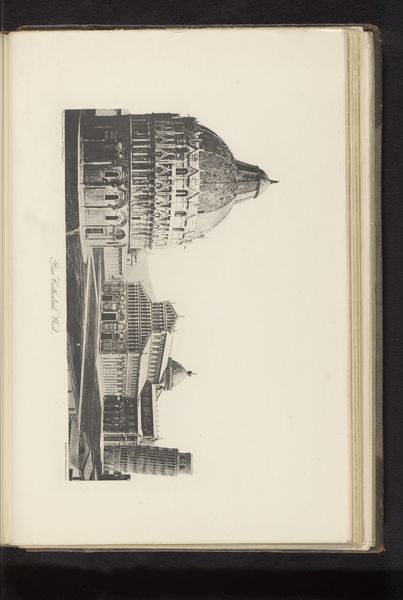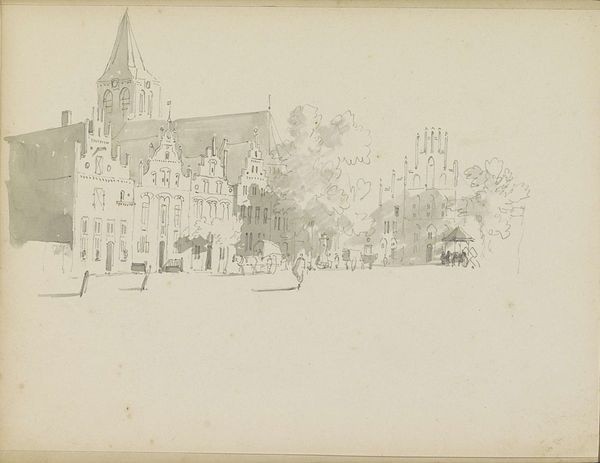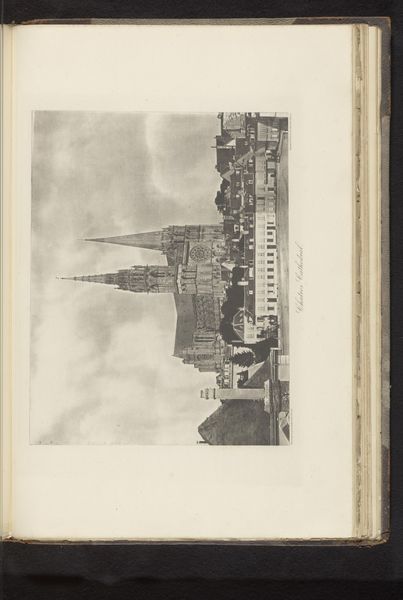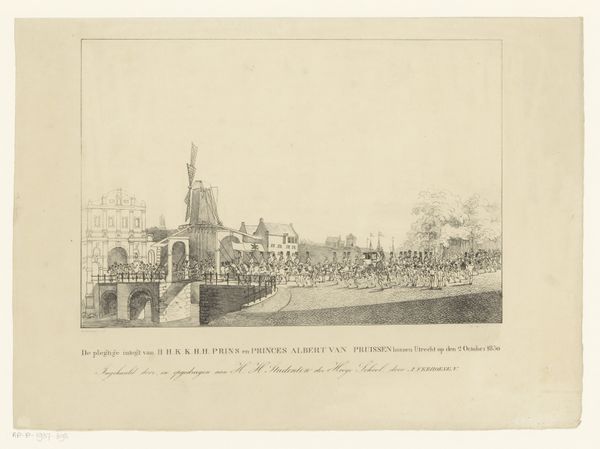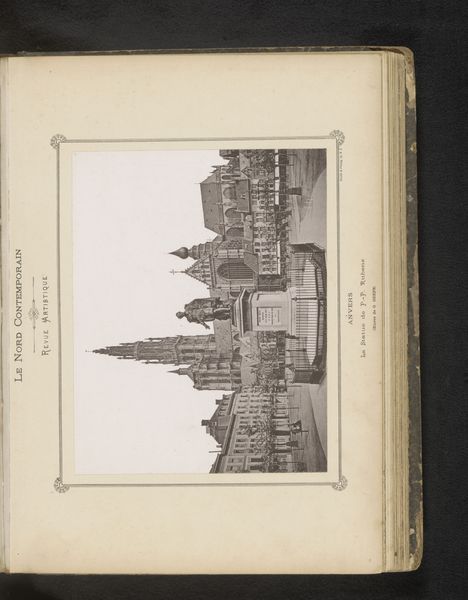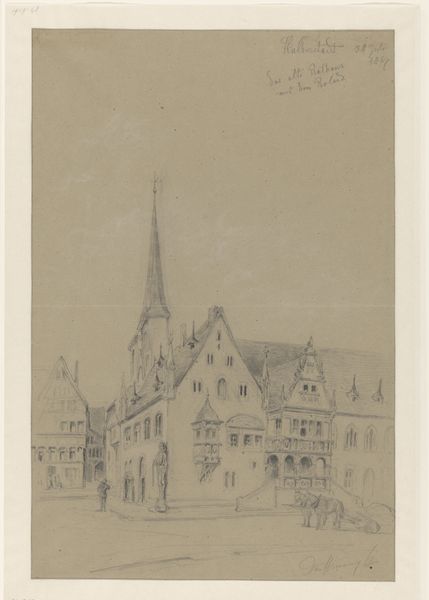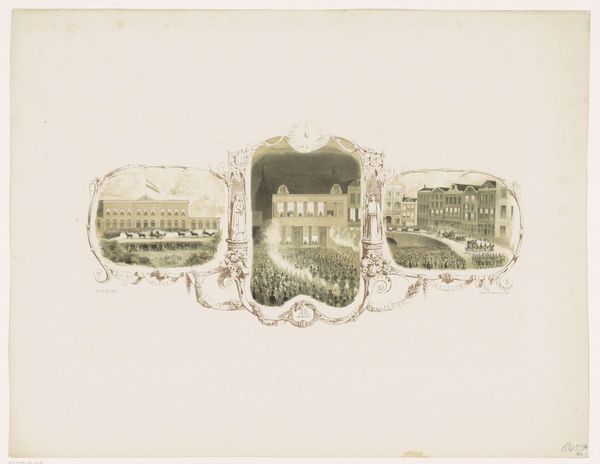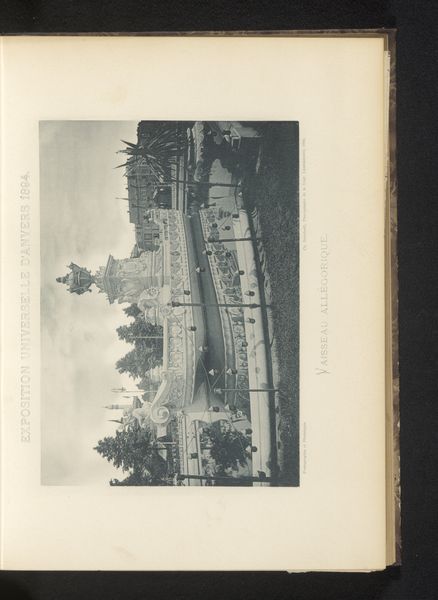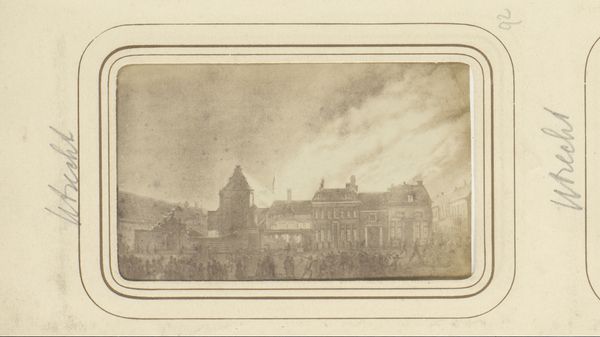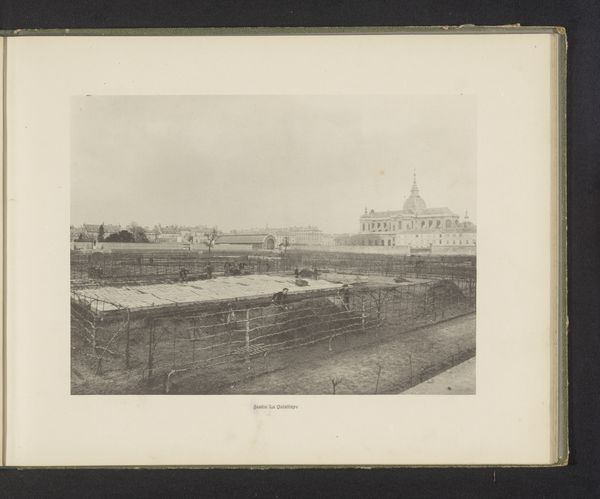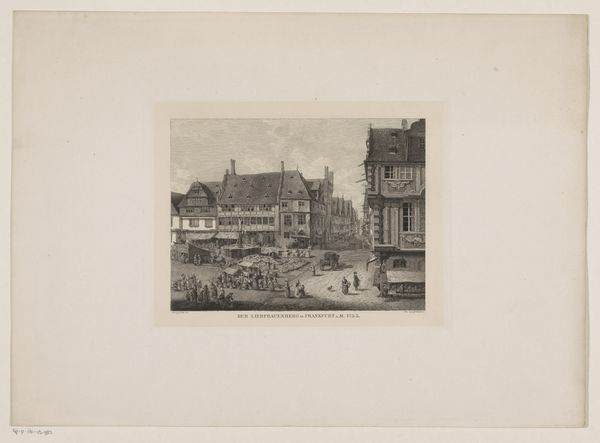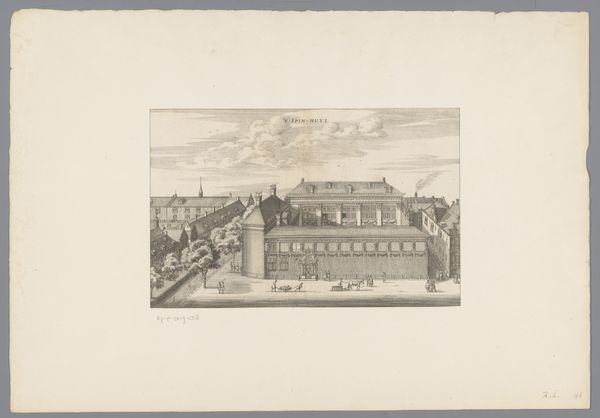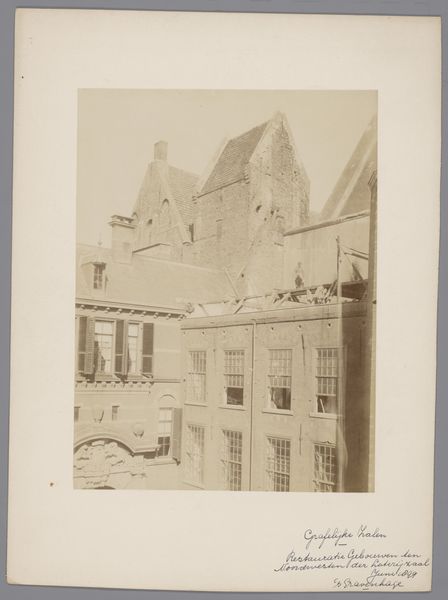
drawing, print, paper, ink, engraving
#
drawing
#
ink paper printed
# print
#
old engraving style
#
landscape
#
paper
#
ink
#
romanticism
#
cityscape
#
engraving
Dimensions: height 241 mm, width 142 mm
Copyright: Rijks Museum: Open Domain
Editor: This is "Sint-Margarethaklooster en Sint-Pieterskapel te Amsterdam" from 1844, created by Johannes Hilverdink. It’s an engraving in ink on paper, and something about the ordered architecture gives it a really formal, almost regimented feeling. What's your take on this piece? Curator: That feeling of regimentation is a good starting point. Looking at it through a contemporary lens, I wonder what this organized structure of the monastery and chapel really represents. Consider the historical context. In 1844, the power structures of religious institutions were deeply intertwined with social and political control. Do you think the artist is celebrating or critiquing this power through such a rigid depiction? Editor: I hadn’t considered it that way. The details are so precise; it seemed like an objective record. So, are you saying the act of meticulously depicting it itself could be a statement about control? Curator: Exactly! And let's also think about who had access to such images at the time? Prints like this circulated among the privileged classes, reinforcing their understanding – and perhaps approval – of the existing social order. The landscape, then, is not just a landscape; it’s a document of power. What kind of dialogue can we create by recognizing such underlying motives and ideas of class? Editor: That makes me rethink the figures on the bridge. Are they simply part of the scenery, or do they represent the everyday people subjected to this structure? Curator: Precisely! These elements invite us to question the narrative and expose hidden perspectives within the apparent order of the scene. What impact might those stories of the everyday people who would have existed around and within these grand architectural forms have on us? Editor: This really changes how I see historical artworks. It’s not just about admiring the technique but understanding the power dynamics embedded within. Curator: Absolutely. It's about using the past to question the present, isn't it? And engaging with historical contexts is part of how we, as a society, come to learn about our past!
Comments
No comments
Be the first to comment and join the conversation on the ultimate creative platform.
